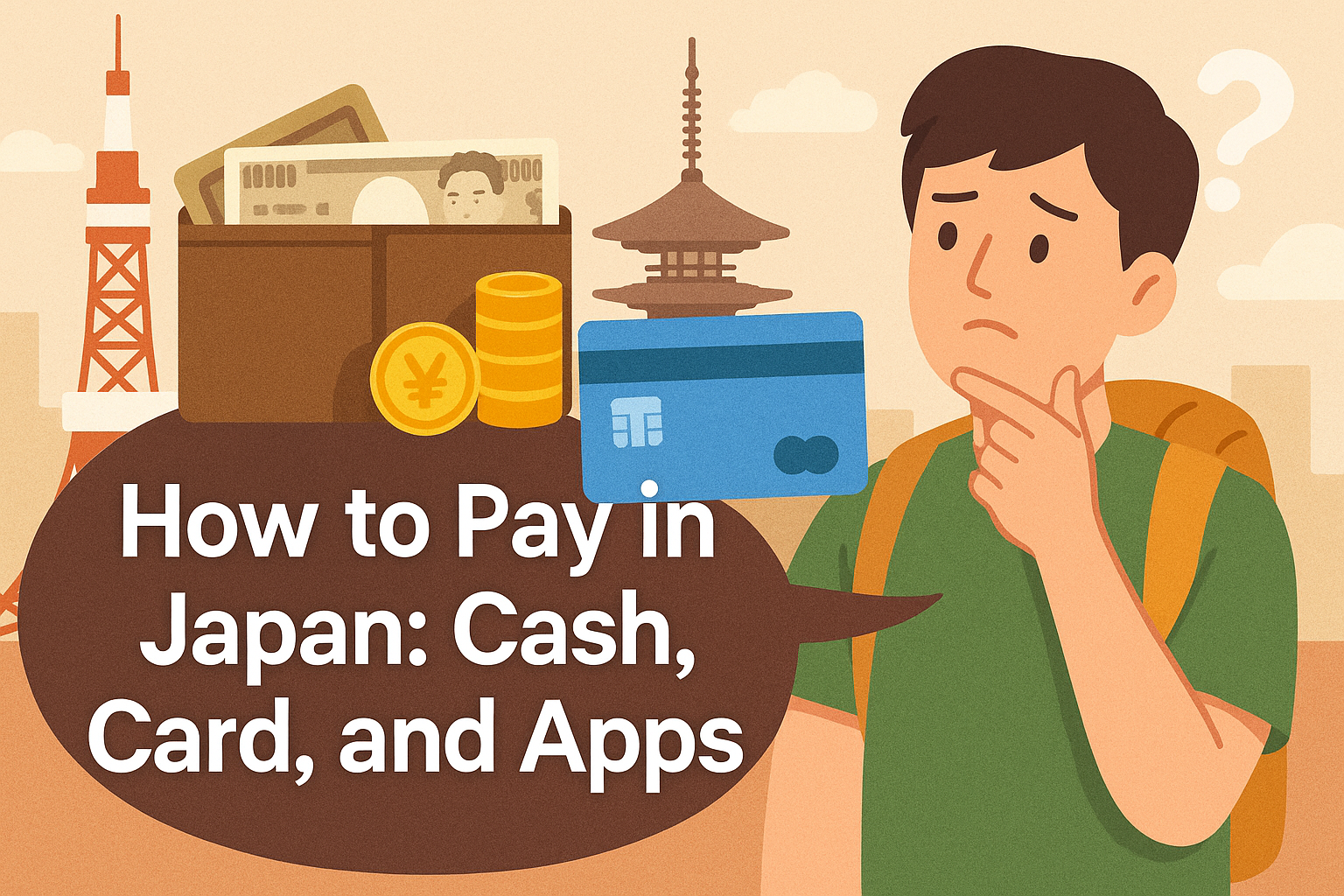👋 Introduction
Planning your trip to Japan? One thing that might surprise you is how payments work. While Japan is famous for its technology, many places still rely heavily on cash. In this guide, we’ll break down the different ways you can pay in Japan and help you choose the best method for your travels.
💴 1. Cash in Japan: Still King
Even in 2025, cash remains one of the most reliable ways to pay in Japan. Here’s what you need to know:
- When is cash preferred? Small restaurants, local markets, temples, shrines, and older shops often accept only cash.
- ATMs for foreign cards: You can withdraw Japanese yen using international cards at ATMs in 7-Eleven, FamilyMart, Japan Post (JP Bank), and some major banks.
- Denominations: Banknotes include 1,000, 2,000 (rare), 5,000, and 10,000 yen. Coins include 1, 5, 10, 50, 100, and 500 yen.
- No tipping culture: You’re not expected to tip in Japan. Leaving coins or bills on the table can even cause confusion.
- Cultural point: Cash is treated with care. People often use envelopes or trays to exchange money politely.
💳 2. Credit & Debit Cards
Credit card usage is becoming more common, especially in urban areas. Still, it’s not universal.
- Accepted cards: VISA and MasterCard are the most widely accepted. JCB and American Express are accepted in larger stores and hotels.
- Where can you use cards? Department stores, chain restaurants, hotels, and big electronics stores.
- Limitations: Many traditional restaurants, small businesses, and countryside shops do not accept cards.
- Extra fees: Your bank may charge foreign transaction fees. Always check before traveling.
- Authentication: Some terminals require a PIN, while others may ask for a signature.
📱 3. Mobile Payments & IC Cards
Japan has a wide range of contactless payment options. These are convenient for both locals and tourists.
IC Cards (Transport + More)
- Popular options: Suica, PASMO, ICOCA, TOICA
- Where to use: Trains, buses, convenience stores, vending machines, some restaurants and shops
- How to get one: Available at train stations or airports
- How to top up: At ticket machines or convenience stores
QR Code Payments
- Apps like: PayPay, LINE Pay, Rakuten Pay, au PAY
- Used mostly by locals, but tourists can use them with a Japanese phone number and bank account
- Not widely tourist-friendly yet, but rapidly expanding
Apple Pay & Google Pay
- Compatible in many cases if linked with Suica or credit cards that support contactless payments.
🧾 4. Tipping in Japan: Do You Need It?
Short answer: No
- Tipping is not part of Japanese culture.
- Excellent service is standard and included in the bill.
- In some high-end restaurants or hotels, a service charge (usually 10-15%) may be added automatically.
✅ 5. Travel Tips: Best Practices
- Always carry some cash, especially for rural areas or traditional establishments.
- Use a mix of methods: Combine cash, credit cards, and IC cards for flexibility.
- Secure your cards: Inform your bank you’re traveling to Japan to avoid declined transactions.
- Lost items often return: Japan’s lost-and-found system is reliable, so lost wallets or cards have a good chance of being returned.
📌 Conclusion
Japan blends old traditions with modern technology, and that’s especially true with payments. Understanding when to use cash, cards, or apps can make your trip smoother and stress-free. Plan ahead, and you’ll navigate Japan’s unique payment landscape like a pro!
💡Want more travel tips? Check out our blog for guides on etiquette, food, festivals, and hidden gems across Japan!



コメント